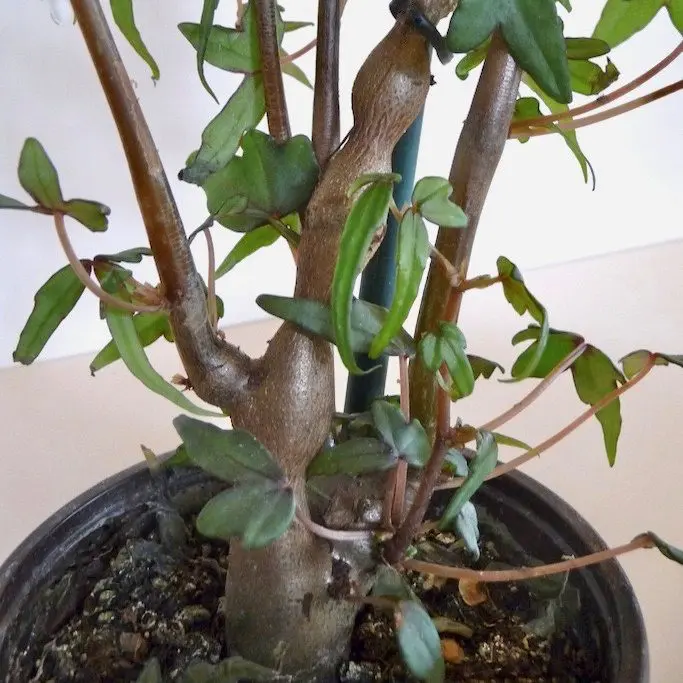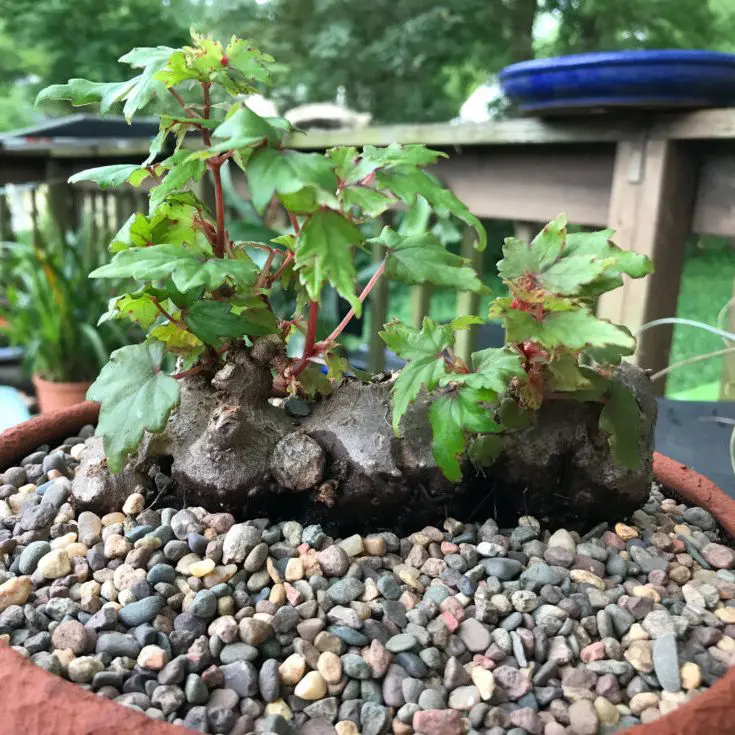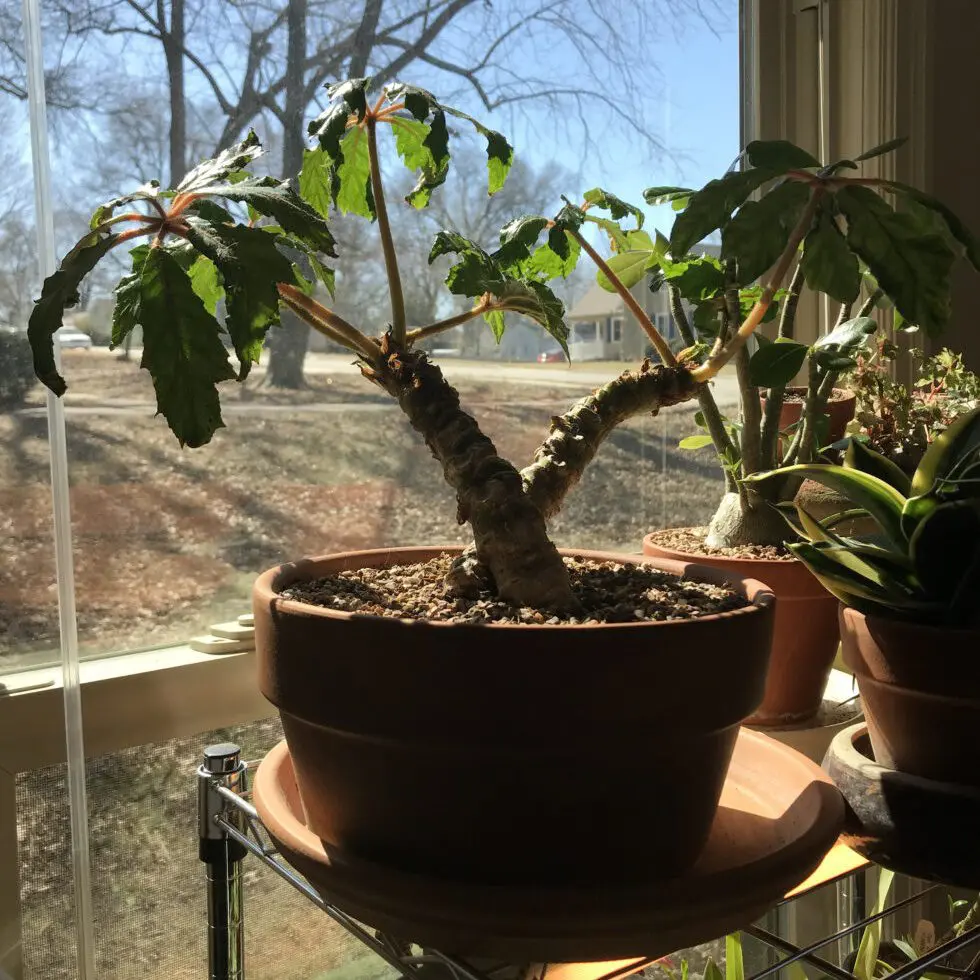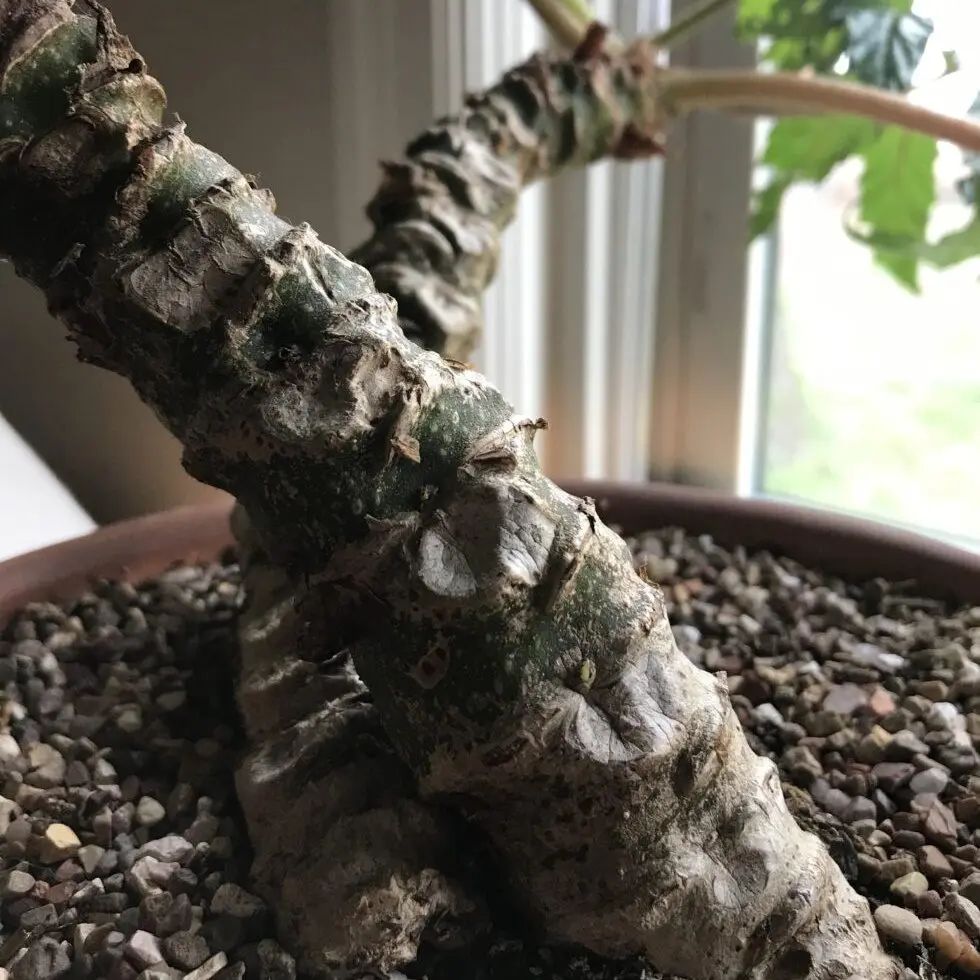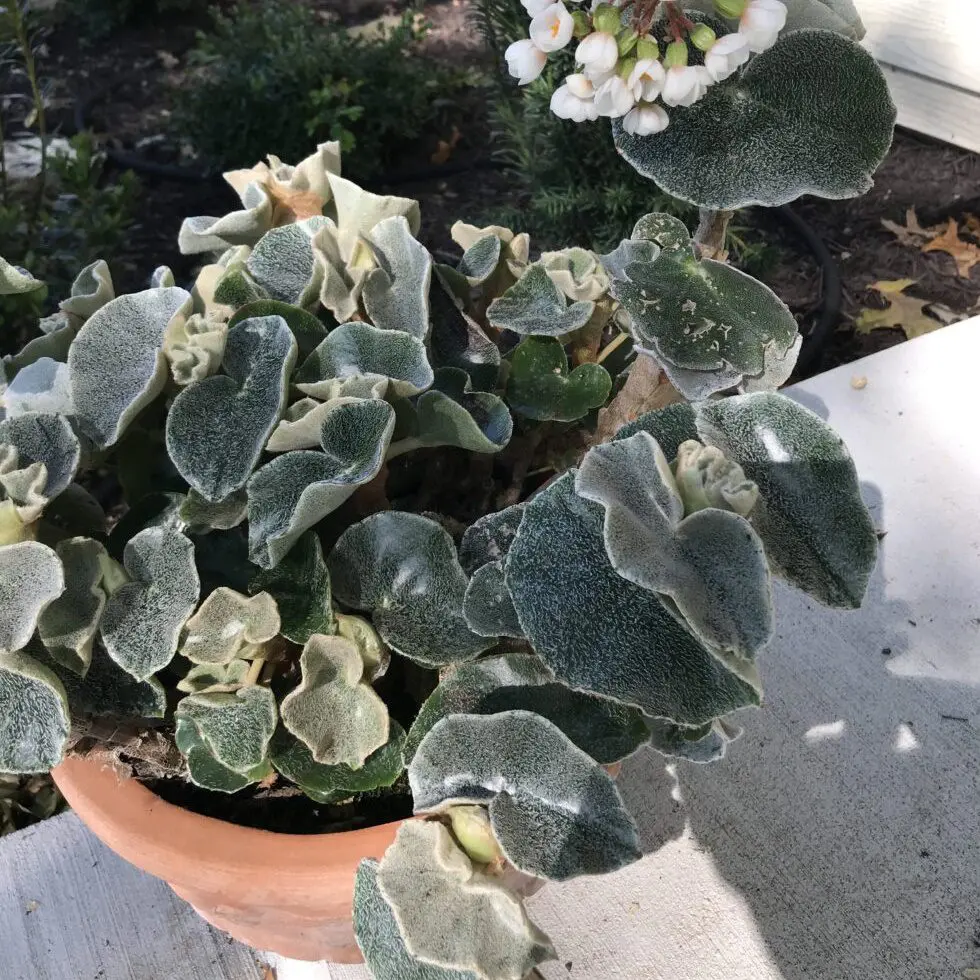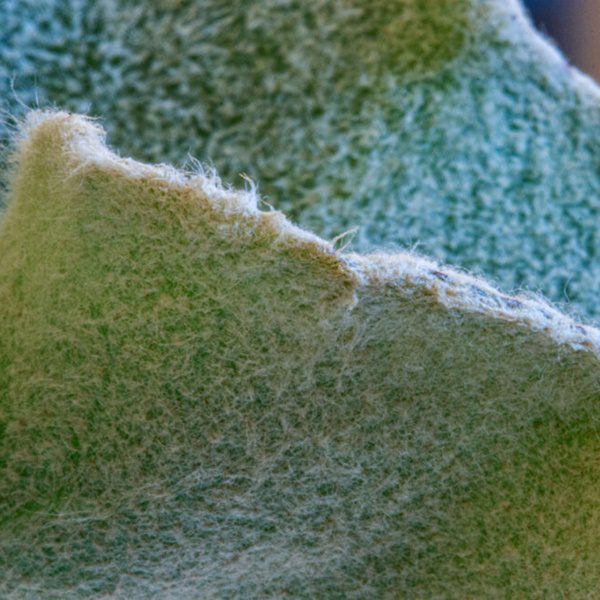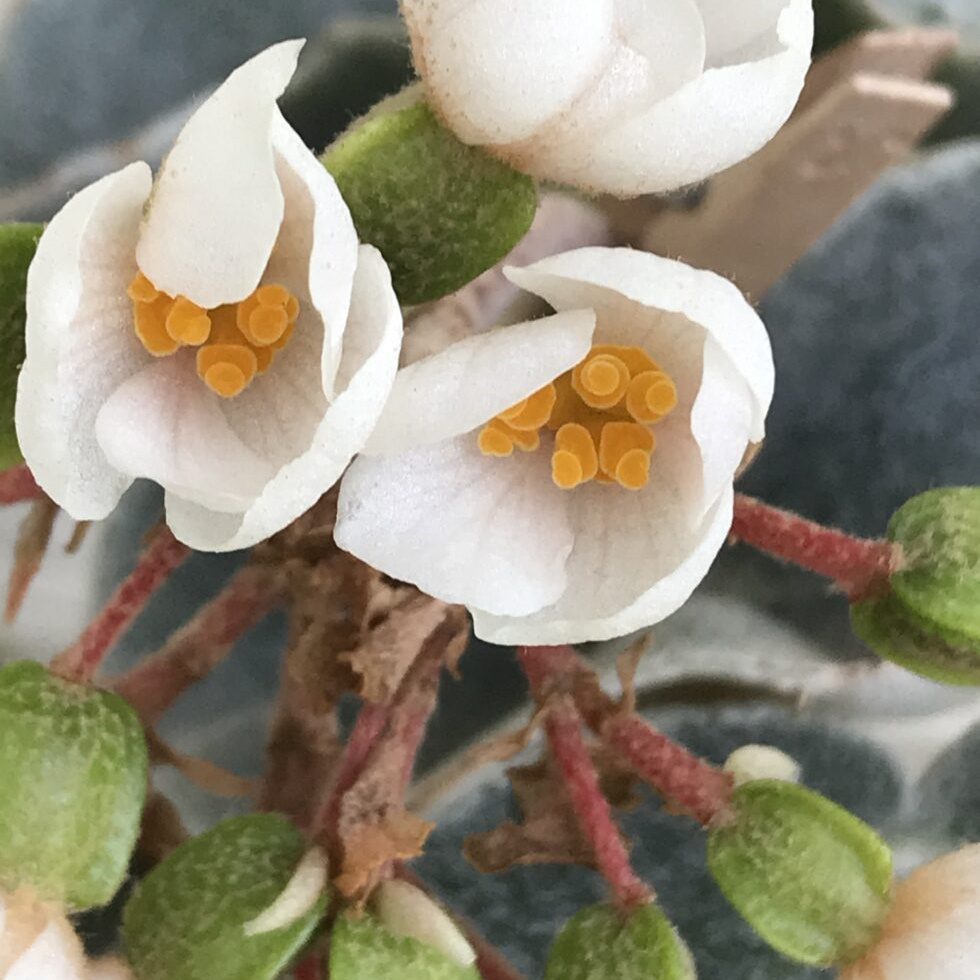Succulent plants have always held an attraction for me. Plants with craggy, swollen stems, like Adenium obesum, the Desert Rose, or Stephania erecta. Plants covered in hair that have water conservation down to an art, like Kalanchoe beharensis, Oak-leaved Kalanchoe, or Cephalocereus senilis, Peruvian old man cactus. Then, I discovered begonias, with their colorful, asymmetrical leaves and cascading umbels of bloom. Begonias seem so much more delicate than succulents, I thought.
Turns out, succulent begonias ARE a thing. Now I grow them alongside my haworthias and mammillarias. Once again, I see even more diversity in the genus Begonia.
Begonia richardsiana and Begonia suffruticosa are just a few examples. Notice the longer, more pointed leaves on this Begonia dregei partita
Begonia dregei, aka Bonsai Begonia, aka Maple Leaf Begonia.
This one can be found under many names, though botanists are settling on B. dregei. As the large, forested area B. dregei is indigenous to was broken up through development, the plants began to diverge with different leaf shapes and spotting. To differentiate leaf shape, the synonyms are often used. Begonia partita
Against the back wall at a Cactus and Succulent Society show where the show winners were located, was the most beautiful, bonsai grown, caudex bearing plant I’d ever seen. It was fully covered with delicate foliage and flowers. The tiny leaves made it look truly like a tiny maple tree. A weathered-looking, silvery caudex – imagine an ancient boulder in miniature – was sprouting the stems those dainty leaves perched upon. Ribbons and trophies were scattered around it. I was smitten.
My B. dregei is planted in a very porous, unglazed clay pot. In the summer, if the weather is warm, it grows like a weed and drinks like a fish. In winter, where it resides on a windowsill or under lights, I study the leaves to know when a little water is needed. I have had a catastrophe or two and nearly lost the entire plant to overzealous watering. Fortunately, B. dregei is easy to propagate. I always keep backups.
Here in the middle of the U.S. where I live, my plants are always moving in or out of the house. It makes growing a bit of a challenge. In summer, B. dregei appreciates protection from full, extended sunlight. I keep mine on a deck facing east, under partial shade cloth. I try to achieve that elusive thing they call “bright, filtered light.” Winter in Zone 6 is trickier. By mid-October my plants have been whisked indoors to find a spot under fluorescent lights or crowd into a windowsill. B. dregei responds best to a warmer windowsill in the upper part of the house. In the basement light garden, even with fans constantly running, powdery mildew is almost a sure thing. Moving the plant to a consistently cooler spot also guarantees total leaf drop. I stick with a sunny south or west window now.
B. carolineifolia – aka Palm-leafed Begonia
A small B. carolineifolia was a bit of a surprise to me. Being familiar with the giant B. ‘Ricinifolia’ and the tiny B. bowerae, I was expecting the usual prostrate rhizomes. As my plant grew, and the rhizome began reaching for the sky, I realized this one was an oddball.
As the plant grows and the leaves fall, prominent leaf scars remain.
The pattern left looks like the trunk of a palm tree. The leaves, described as ‘palmately compound’ in botanical descriptions, complete the picture. The living caricature of a palm tree. Unlike many begonias, it’s a very slow grower. My plant is at least ten years old and still looks a bit over-potted in a 6” bulb pan.
With thick, leaf-scarred stems and palmate leaves, it’s easy to see why palm-leafed Begonia would be a common name for Begonia carolineifolia.
Like the succulents it shares the windowsill with, Begonia carolineifolia needs excellent drainage. I use a cactus mix and add a little extra potting soil then plant in a clay pot. Glazed pots hold too much moisture. During summer rainy spells, the plant returns inside temporarily to avoid any excess water. In the winter, the plant gets watered sparingly about every 10 days to 2 weeks.
Once outside for the summer, I give Begonia carolineifolia morning and afternoon sun. The leaves sunburn easily, so I introduce it to the summer sun gradually. From fall to early spring, it stays in a south window where the temperatures range from 55 – 70 F. Keeping it warm and fairly sunny in the winter ensures the leaves stay healthy.
Begonia venosa
Thumbing through a copy of Graf’s Exotic Plant Manual was the first time I saw a picture of Begonia venosa. The gray tone photo didn’t do the plant any justice. The leaves are heavily felted, like they have on expensive boiled wool coats. Depending on the light, the hairs shine silver, then blinding white a moment later. The leaves are thick and succulent under their hairy cover. The fat stems are covered with mocha brown, papery netting. All those fascinating touches are really drought survival techniques. Very beautiful survival techniques.
I have tried to grow B. venosa from cutting, purchasing plants, seeds… never much luck – until recently. A friend who was moving asked me to take his B. venosa. The plant turned out to be quite large and extremely healthy for Kansas in December. He told me the secret was to fill a pot with rooted cuttings from the outset. Being pot bound suits them, he told me. It seems to work. The plant is under lights in my cooler basement.
Friends in Australia grow this plant outside in the bright sun as a bedding plant. I imagine the blossoms’ spicy aroma filling the evening air. Mine gets fierce morning sun in the summer and shade by early afternoon.
Even with all of its built-in sunburn protection, I need to move it to its sunny spot over a couple of weeks. When it comes to water, I have to forget this is a Begonia. In the winter, watering is done only about once a month and only lightly. Using a restrained hand all year round is the best advice I would have for watering this plant. If the weather is cool and rainy, it gets moved to a spot where it remains dry.
There’s wonderful variety in begonias and always a plant or two that will fit with whatever or wherever you are growing your plants. Branch out and try something completely different. You’ll be richly rewarded.

